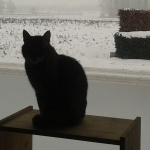Slinky wrote:You can detect between "pallet saggers" and passive "tongue sliders" during a sleep evaluation? Or how do you determine one from the other?
Slinky, my understanding is that today's typical PSG methodology cannot differentiate the various mechanics of airway obstruction.
But doctors will typically try to screen for typical nose, pharyngeal, and craniofacial characteristics associated with sleep disordered breathing. I think that type of physical evaluation is also used to help assess likely treatment options.
echo wrote: As for the second comment -- SWS yes please I would really like more info on these various types of apnea causes. According to my sleep doc I am more the case of the second - ie. my airway is narrow to begin with and I have a receding chin -- I never thought about the implications of that on my OSA. Except that all the sleep doc would say on that was that it just made it more likely that my tongue would get lodged in my throat. I don't think i have the 'sagging pallet' ?
My wild hunch is that many of us possess some combination of common airway-closure related mechanics. However, I also think some of us probably possess one trait or another as being most salient in the makeup of our own somewhat unique airway-closure dynamics.
echo wrote:Are the 'airway physics' somehow different in one case versus the other? That is, does CPAP have more or less tendency to resolve one obstruction vs. the other??
The physics of airflow are going to be pretty much the same (Google either "apnea" or "flow limitation" together with "Starling resisitor" model). Essentially the dynamics of pressure, flow, and airway resistance through a collapsible tube (or pharynx) will behave very similar, regardless of how that increase in airway impedance occurs. The physical mechanics of airway closure or partial airway closure are specifically what change. Generally those "elastic" airway closures tend to resolve nicely with airway inflation or pressurized airway "stenting". But in some cases, such as Velbor's, moving the mandible forward (via dental splint or surgery) seem to help more than using CPAP. I think Velbor's results may simply be a function of forward mandible travel yielding more airway clearance than airway inflation can possibly yield (probably at some relatively inelastic or less-elastic point of airway occlusion in Velbor's case). There are yet other nasal/pharyngeal/craniofacial surgical options that don't always work so well.
echo wrote: Do you have any literature on this?
Sorry, I'm not a very good literature/link collector. Here's one interesting and semi-relevant link that I just now gathered:
http://pats.atsjournals.org/cgi/content/full/5/2/136 (see section on Craniofacial Anatomy as well as relevant footnotes)
echo wrote:Location: 1060 W Addison St # 1, Chicago
GO CUBS!












